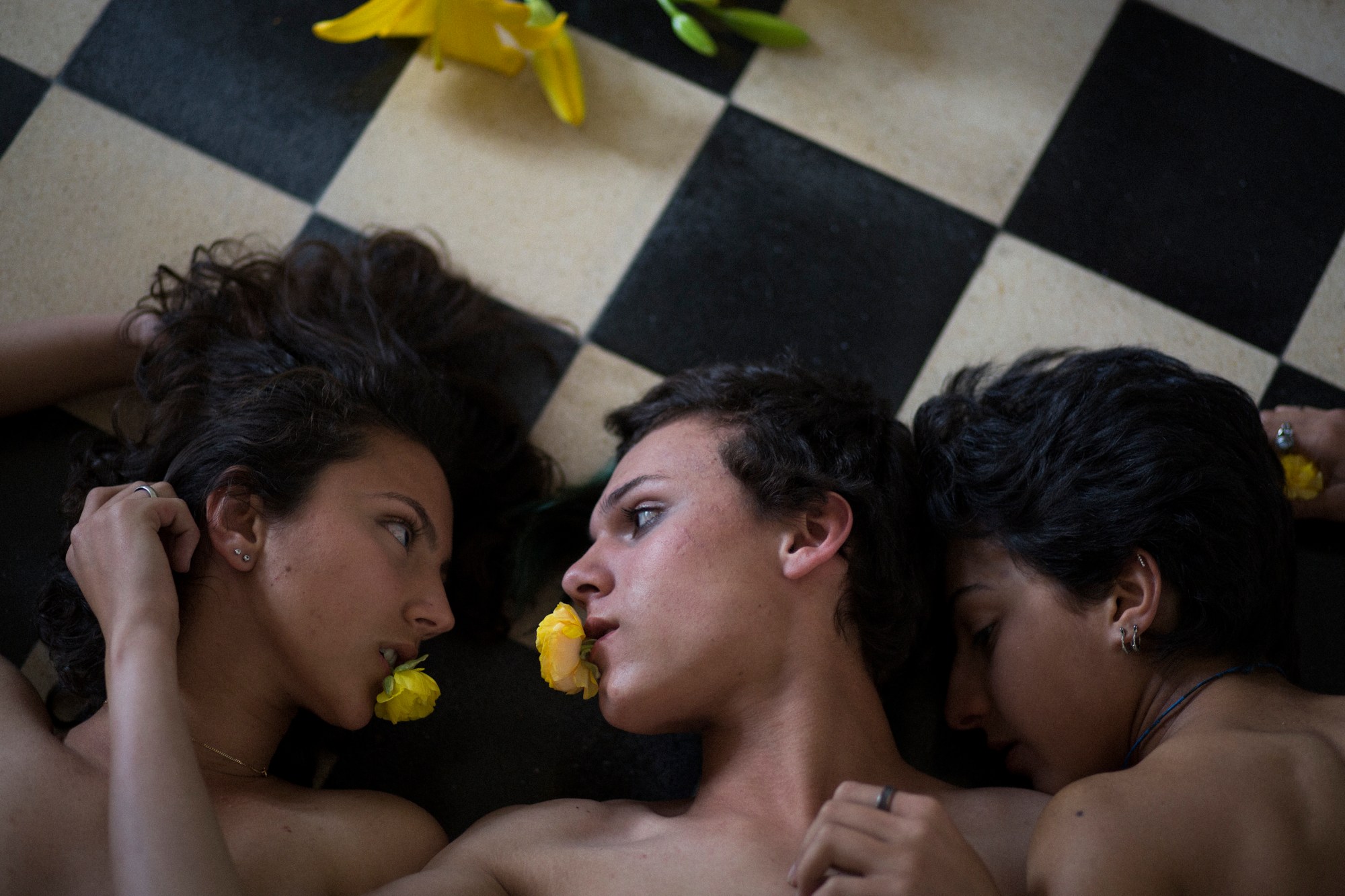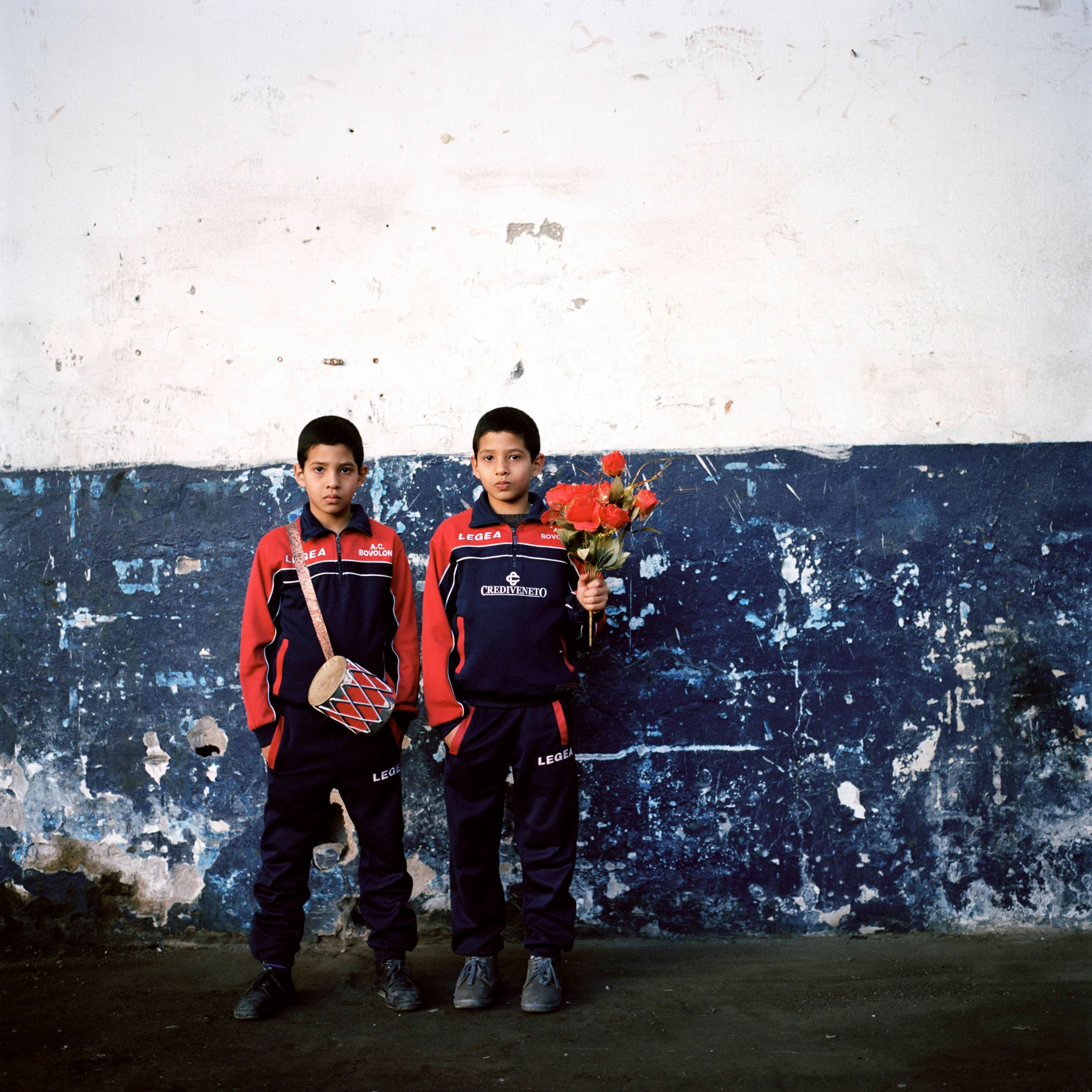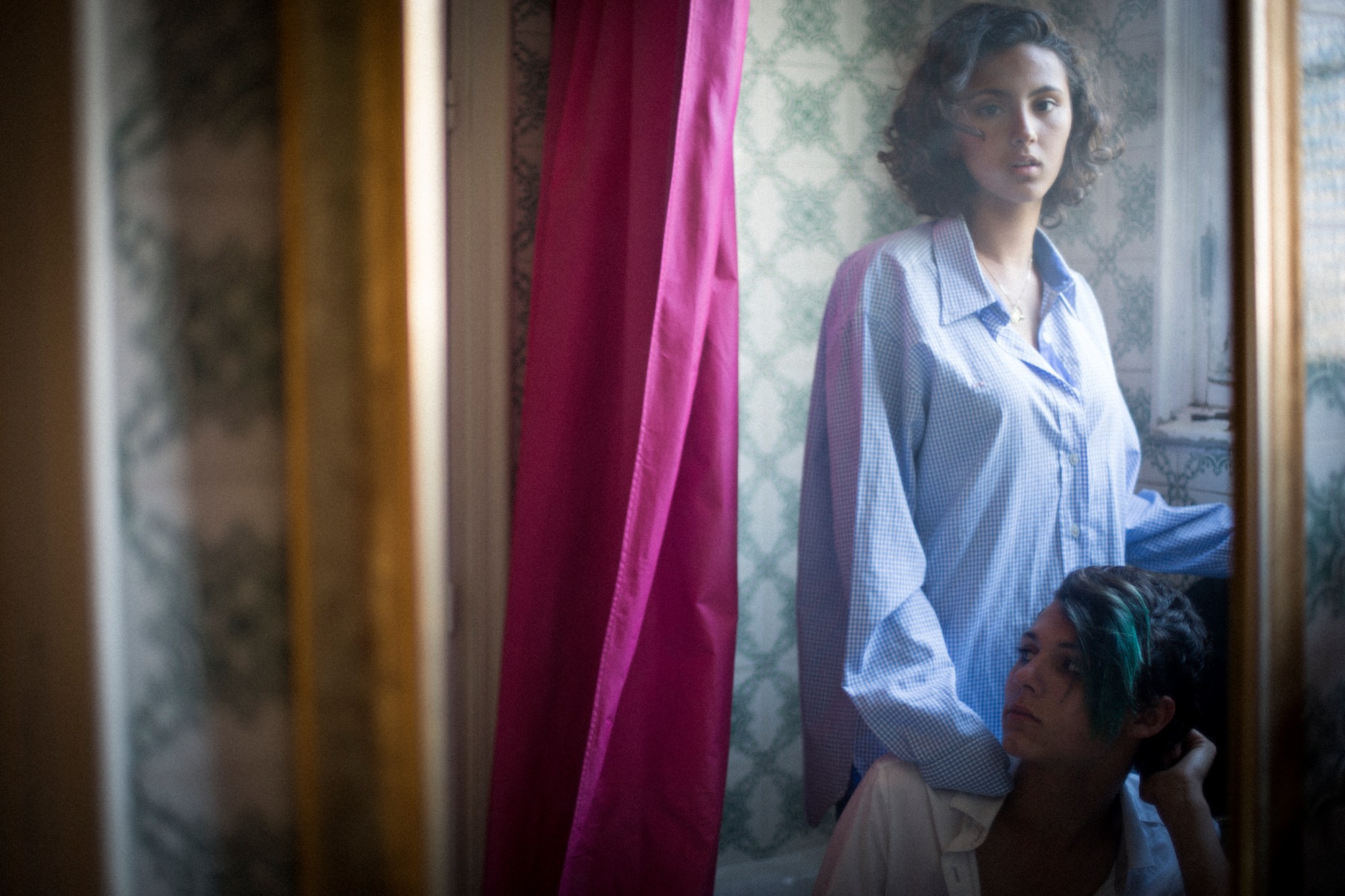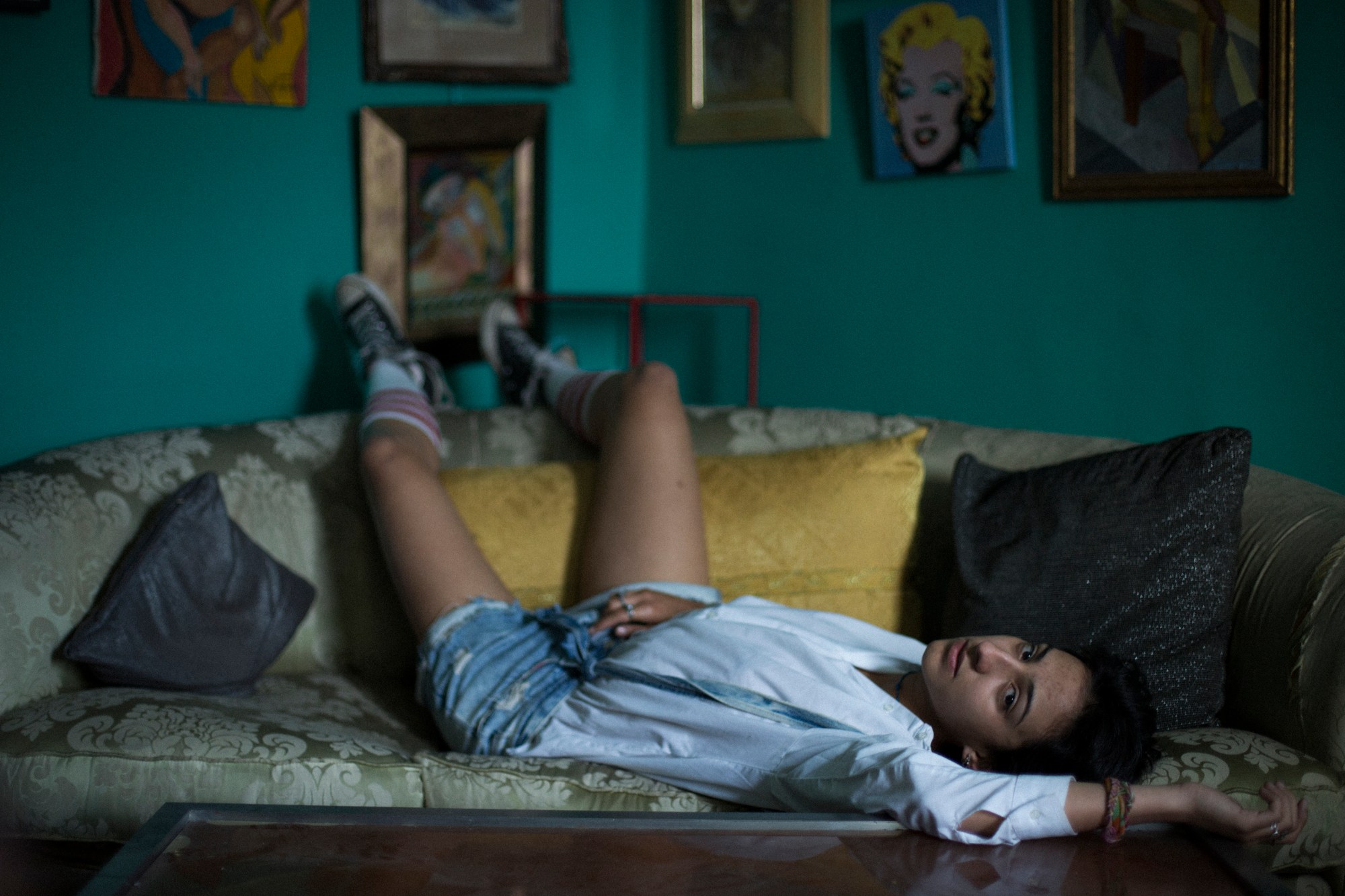The inaugural Rabat Biennale in Morocco features a cross-disciplinary group of artists from Iraq to Algeria, Lebanon to Tunisia, as well as European countries and of course Moroccan natives. The featured international exhibition, which runs through December 18, has a particular pioneering feature: it is dedicated entirely to women artists. There are 63 in total—Mona Hatoum, Etel Adnan, and Zaha Hadid amongst them—whose work is sprinkled throughout the city’s indelible cultural sites (Rabbat became a UNESCO World Heritage Site in 2012).
It is within this context that the Casablanca-born-and-based photographer Deborah Benzaquen will be showing “Où sont mes rêves?.” Benzaquen describes the short film as a “self-portrait of my own anxieties.” Weaving together footage of herself she shot on an iPhone, GoPro, and Canon 5D, she comes to terms with her “misfit” identity, having grown up in Morocco with a Swiss/Protestant mom and an Algerian/Jewish dad.
She has been drawn towards other outsiders who are hard to classify in Moroccan society, like a youthful crew delicately exploring queer identity despite the risks within a Muslim country, or those with outlier identities who struggle within Moroccan society. Benzaquen has also explored notions of mixed heritage through her series Berberliner, featuring a hybridization of international fashion and regional garments.

As she was finalizing her video piece, Benzaquen discussed her past work, Morocco’s polarized social values, and being attracted to the “transgressive” while being skeptical of celebrating it superficially.
The Rabat Biennale is spotlighting work exclusively by women—how do you feel about the way gender is being addressed in the art world these days?
It’s fashionable to put gender at the forefront as a subject. I don’t really like the idea of a feminine biennale. I understand why Abdelkader Damani [curator of the Rabat Biennale] made the decision though… In Morocco, I actually think it’s important to do a female biennale, because in Africa, it’s not at the same level. I wouldn’t think that in America or France or Spain. But here, it might make men realize the power of these artists—or even just their existence [laughs]. Doing this is very brave in Morocco. It’s going to change a lot of things for a lot of those women. But I think we need to be careful.
Biennales and fairs celebrating African art are multiplying internationally and bringing new visibility to the sector at the global level. What do you think about this?
I think it’s too much. It’s great, but it’s also discrimination for others. The mixing is what’s good. We shouldn’t narrow things—we should open things. Because an artist is African or Arabic—“Wow! He’s fashionable.” I don’t think it’s right. I think it’s right if he’s good.

The idea of “good” is so culturally conditioned though, which is why there’s a need to provide this visibility. When did you start photographing?
I started photography “for real” when I was living in New York, around 1997-98. I was using analogue film; I was developing in darkrooms. I was doing much more street photography than I do now. Here, people don’t like being photographed—or if they do, they have an attitude that you wouldn’t want. It’s better to steal a photograph [laughs]. In Morocco there’s always someone who’s not doing anything but watching what you’re doing, and would tell on me to the subject. I realized I couldn’t be natural. I started creating a kind of set design. I learned to work that way, protected from the outside. The outside can be… not aggressive, but difficult, and crowded. I already look different, European or American, because I’m blonde with blue eyes. That’s really hard for me; I look like I’m a tourist. In the street, I don’t feel Moroccan because I don’t look like them, and I’m not Muslim. They would not like me to take pictures of them.
In Super Héros, you photographed a group of figures who fall outside the “normative.” How did this group come together?
Super Héros was a commission for the CCME [Conseil de la Communauté Marocaine à l’étranger] about tolerance in Morocco. Obviously there is not so much tolerance—more than before, but not so much. For those people, it’s still very hard. When I talked to them, they said ‘we are sorry for those people who don’t respect us—and we forgive them.’ That’s beautiful.
I decided to photograph them as a team. The respect they showed each other during the shoot was beautiful. They didn’t know each other, but everyone got along right away.

We stayed together only a few hours because we had issues. Even though I had authorization—I was inside a building—guys outside the building saw I was with transvestites. They were all so different within this group, and these guys outside couldn’t understand it, and they didn’t like it. They are mean because they don’t know—they’re not used to it. They called the person I got the authorization from, and I was told to leave so there wouldn’t be any problems. It’s crazy.
That is crazy.
Here in Morocco, it’s really harsh between people. There is no solidarity between social classes or even within classes. It is becoming more and more religious, and thus more close-minded. It’s really hard to live with that. Morocco has always been so contrasted: It’s really open for some things, and really not for other things. You never know what the limit is. For example, you have alcohol everywhere—bars and restaurants have licenses. But the authorities could come to your bar tomorrow and say: ‘you’re going to jail for selling alcohol, because the law doesn’t allow it.’ In advertising, you’re not going to show a shoulder because it’s haram because it’s a Muslim country—but you can have another ad with much more than a shoulder that passes!
With a series like Sweet Surrender, you subtly address queer culture through the prism of adolescence, with these young figures acting so tenderly. What was the conversation around identity like with them?
Sweet Surrender is the name of a really beautiful song from Tim Buckley, so the series is a wink to that. The subjects were really brave and cool—really down-to-earth. I’m sure some of them are going to change their opinion about their sexuality, none of them were sure. They were more pansexual than queer, they explained to me. They could fall in love with a chair! They didn’t say that. They’re teenagers—they’re lost a little bit. The danger of it is just the passion of it. What I like with those kids, they weren’t trying to be cool by being open. They had a “force tranquille”—a quiet power. I love that in people. It’s reassuring. But today it’s very fashionable to be queer, which I think is dangerous.

Can you elaborate on the perils of expressing queer identity in this context?
Religion is taking over. If you go into a store, instead of music you can hear the Quran. A lot of people are trying to show that they’re good Muslims instead of good people or good parents. It changes a lot of things. What I wanted to show in this series is the free will to show what you are. And the kids had that, and they had parents who let them have that, because I needed to have authorization since most of them were 16-17. If you can give your kids free will, that’s beautiful. It’s beautiful that they can have the choice. It’s nice for one guy to want to try to kiss the other guy—and he can, today, and he can talk about it. Sexuality is very personal. It always has been free, anyways, but without giving people rights. If the state is behind you with laws, that makes it more comfortable than when it is prohibited or dangerous. But we need to be careful with this “fashionable” aspect. It’s everywhere.
